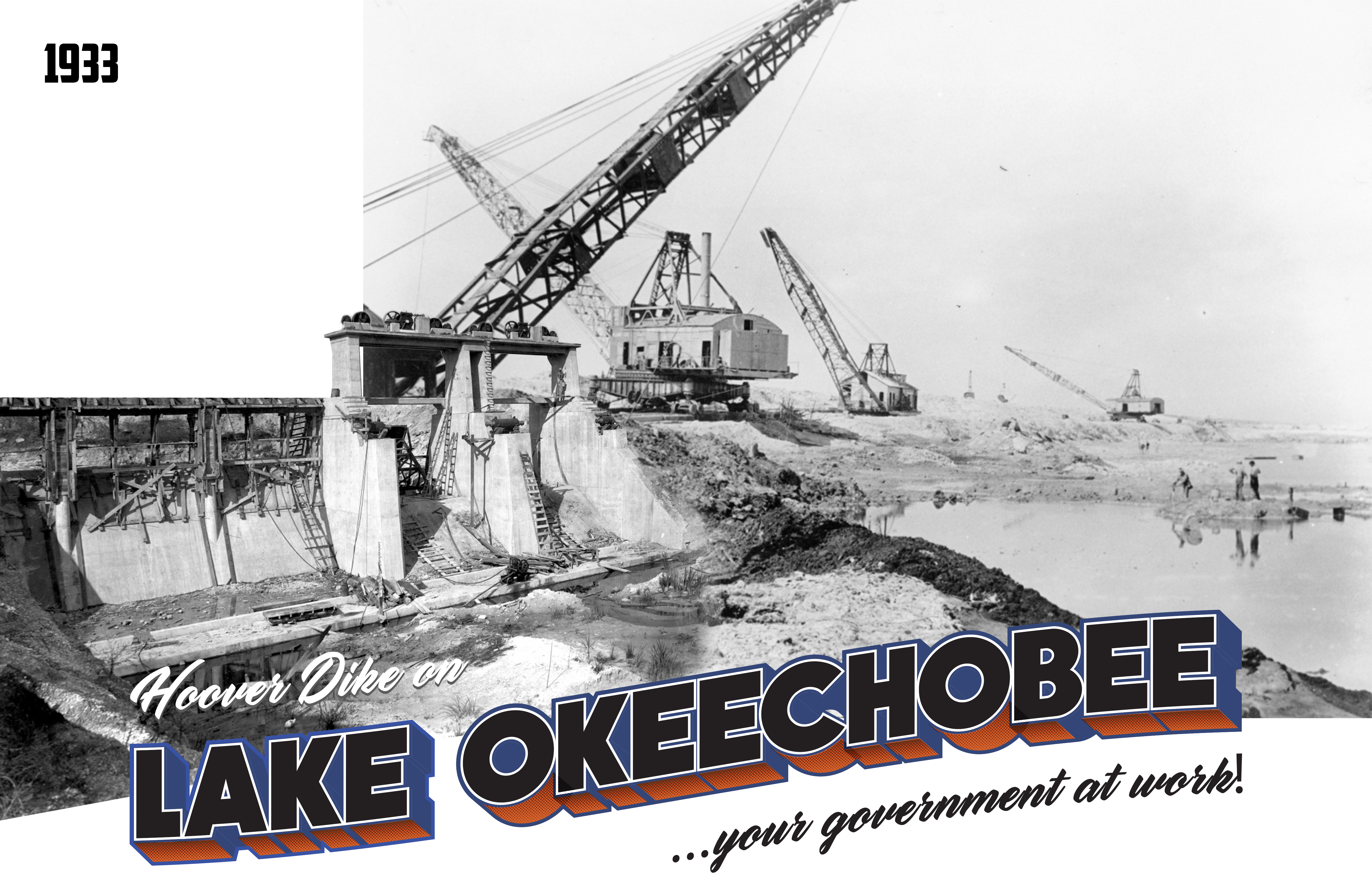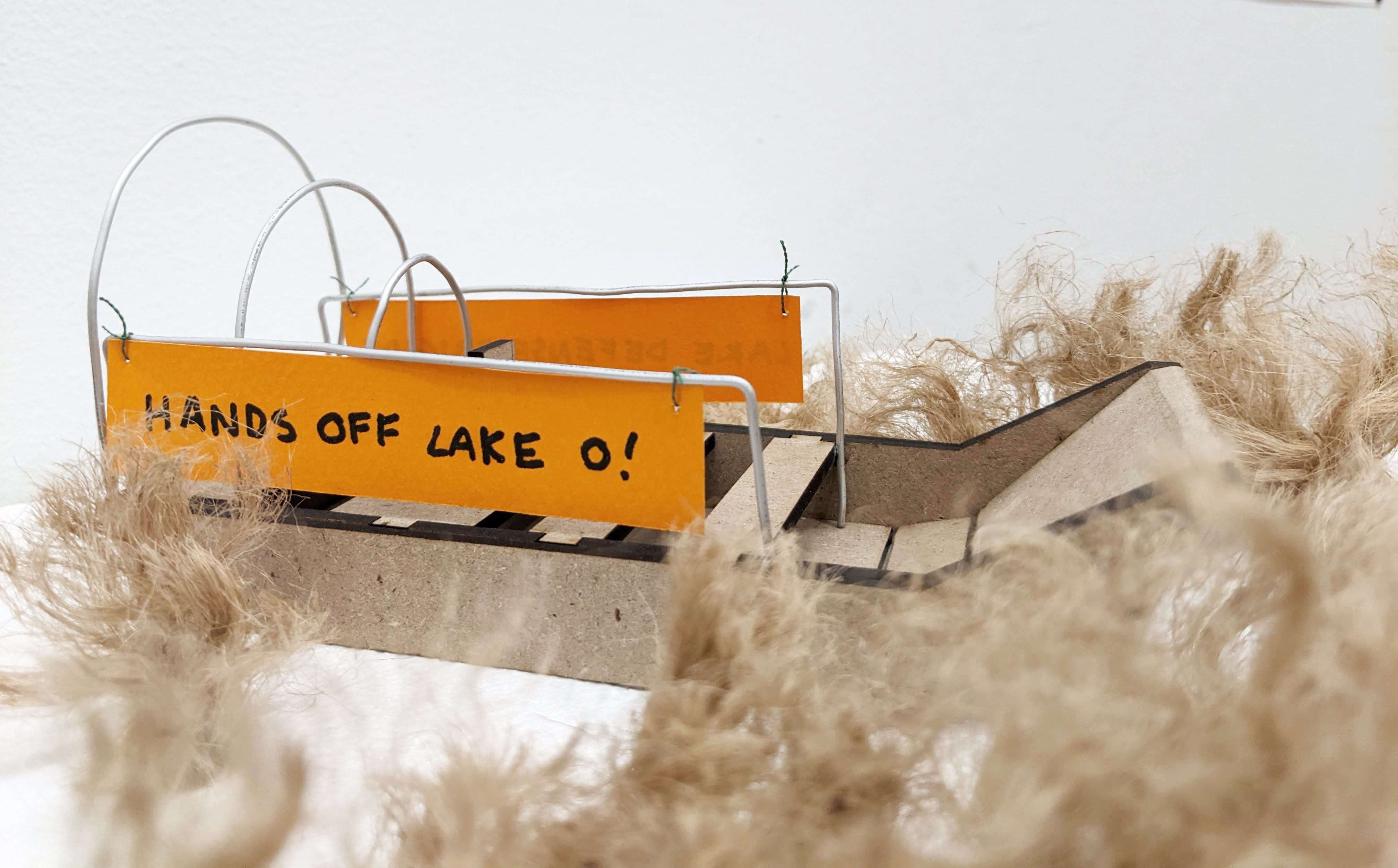sea of grass
the death + afterlife of infrastructure on lake okeechobee
spring 2022Also known as Florida’s Inland Sea, Lake Okeechobee covers 730 square miles and is the second largest freshwater lake fully contained in the lower 48. Located at the northern end of the massive Everglades system, the lake is extremely shallow, averaging just 9 feet in depth, and ecologically rich, home to over 40 species of fish, waterbirds, alligators, and thousands of arthropods. It is also the heart of the South Florida Water Management District, a highly engineered system of canals, dikes, and sluice gates that controls the water for a large agricultural area dominated by sugar cane.
This project is a counterfactual imagining of the death and afterlife of this flood control infrastructure. It imagines that a hurricane struck in 1933 during the construction of the dike around Lake Okeechobee, obliterating the beginnings of the water control system and wreaking havoc on the surrounding cane farms. Frustrated with the slow progress of the federal infrastructure, the sugar companies advocated for a buyout program that allowed them to relocate further north, leaving the dike uncompleted.
But of course, some people remained. Small communities of agricultural workers, left behind by the disaster response, continued to make their home along the lake’s southern edge. Abandoned cane fields flooded again, and inhabitants began the slow process of undoing the failed water control infrastructure and restoring the lake’s historic flow to the Everglades. Without industrial agriculture, the few remaining residents turned to the lake and its growing abundance of fish, clams, and freshwater mussels. These small communities developed methods of living with the lake’s ebb and flow, combining Seminole stilt building practices with a variety of floating structures layered on top of the ruins of Army Corps infrastructure. The residents were fiercely independent, protective of both their self-determination and the Everglades ecology they relied on.
As coastal cities grew, however, so did interest in taming Lake Okeechobee. Water managers began developing plans to divert lake water to Miami, Palm Beach, and other growing tourist communities in increasing need of fresh water. Unlike the first Army Corps intervention, however, this new plan met with stiff resistance from the residents of the lake’s shores. This project encounters Lake Okeechobee at the moment of conflict between the proposed water diversion plan and the independent communities that have learned to live with the lake. It explores the various strategies residents use to occupy the lake, from ephemeral practices of clam digging to floating aquaculture dock structures to defensive airboats that patrol the lake to chase off water prospectors. It imagines a world after flood control infrastructure, where habitation around the lake depends not on reinforcing it as a container for water, but on living with it as a process of flow.






produced for PennDesign course Takes on Lakes
instructor: Sean Burkholder